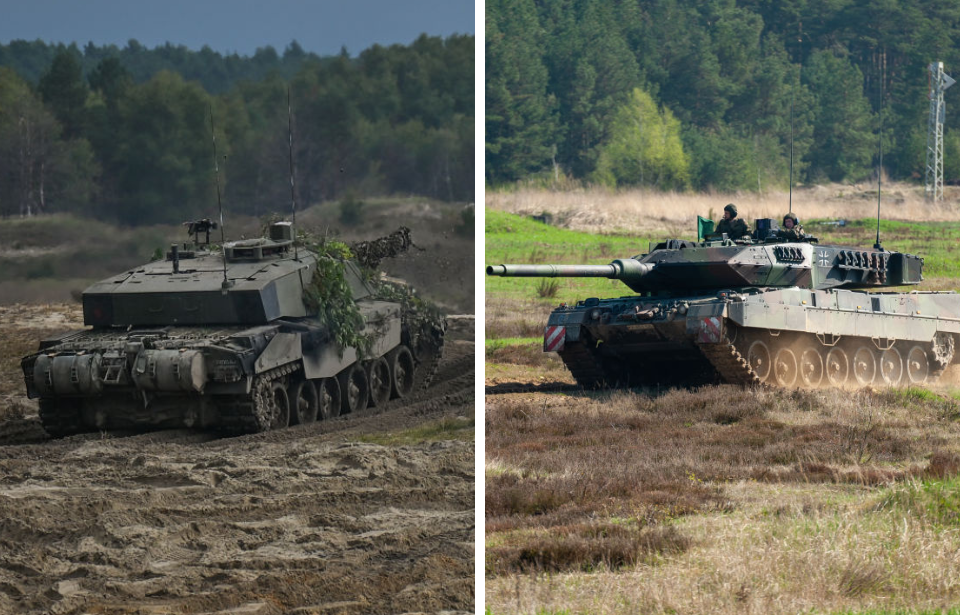Main Battle Tanks (MBT) are some of the best armored vehicles in any military’s arsenal. Typically serving on the frontlines as a direct-fire weapon, they’re able to move through areas ground troops might find difficult, whether that be because of heavy fire from enemy weapons or difficult terrain. Their blend of advanced weaponry and protective armor make them difficult to take out in the field, and that’s why they’re admired by military aficionados all around the world.
The following is a list of the eight best main battle tanks currently in operation. Are there any you wish we’d included?
Leopard 2A7+
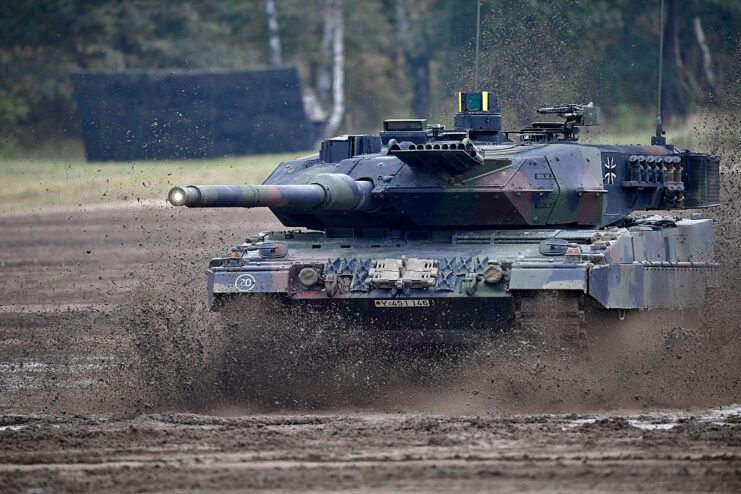
The Leopard 2A7+ is a next-generation main battle tank developed by Krauss-Maffei Wegmann (KMW). Debuting in 2010, it leverages technology from its predecessor, the Leopard 2, and has been adopted by the Bundeswehr for urban and traditional military missions, making it an all-around versatile and adaptable vehicle (and weapon).
The Leopard 2A7+ is armed with a 120 mm L55 / L44 smoothbore gun that’s capable of firing standard NATO ammunition and revolutionary programmable 120 mm High Explosive (HE) rounds. It also includes an FLW 200 remotely-controlled weapons station, which can mount a 12.7 mm heavy machine gun or a 40 mm grenade launcher.
Offering all-round protection with its attached passive armor modules, the Leopard A27+ can shield against anti-tank missiles, improvised explosive devices (IEDs), mines and rocket-propelled grenade (RPG) fire. It has smoke grenade launchers on either side of the turret to conceal it from enemy observation, and it can be fitted with bonus attachments, like a mine plow, roller or a dozer blade, which aid in the moving of debris.
With a maximum speed of 44.7 MPH and a cruising range of 279.6 miles, this highly mobile tank is one of the best in the world.
Abrams M1A2 SEPv3
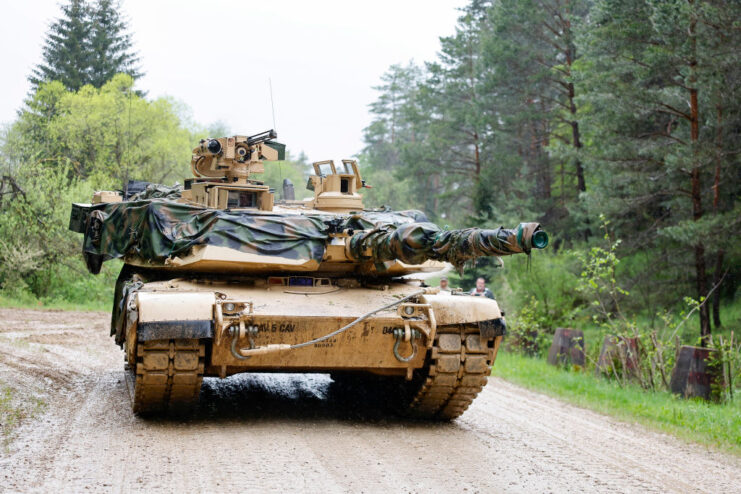
The Abrams M1A2 SEP is a main battle tank developed for the US Army by General Dynamics Land Systems (GDLS). The latest iteration of the M1 Abrams, it builds upon decades of battlefield experience and incorporates impressive upgrades that mean it’s capable of delivering superior firepower and mobility.
The most notable model, the SEPv3, is armed with a German-inspired M256 120 mm smoothbore cannon that’s capable of firing a range of NATO ammunition, meaning it can go up against various armored vehicles, aircraft flying at low altitudes and infantry units on the ground.
What makes the SEPv3 different from its predecessors is that it’s been equipped with improved communications technology, an ammunition data link and several new systems that mean it’s easier to maintain and use in the field. This, paired with explosive reactive armor (ERA) mountings and other defensive measures, ensure those charged with operating the tank can do so safely.
T-14 Armata
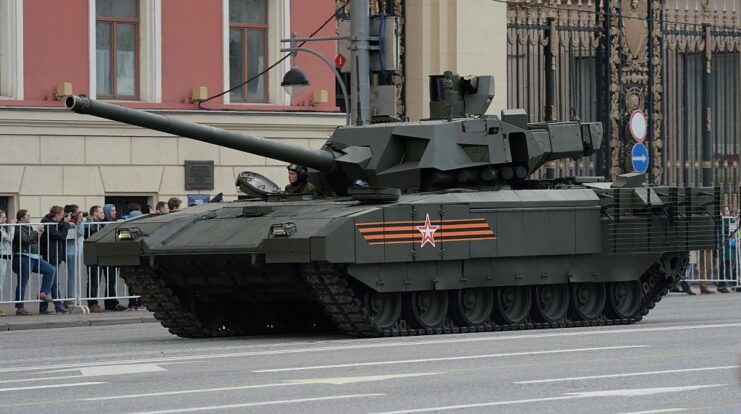
The T-14 Armata is Russia’s most advanced main battle tank. Developed by UralVagonZavod, its standout feature is its unmanned turret, which houses a 2A82-1M 125 mm smoothbore cannon that can fire anything from anti-tank guided missiles, fragmentation shells and even armor-piercing fin-stabilized discarding sabot (APFSDS) rounds. This is paired with two machine guns, which can be remotely controlled.
The T-14 Armata is clad in Malachit dual-explosive reactive armor, and it’s protected by the Afghanit active protection system (APS), which detects, monitors and intercepts incoming anti-tank munitions from four panels mounted along the sides of the turret.
Despite its advanced features, the tank has been limited in deployment, due to its high cost and complexity. There are claims it’s made appearances on the battlefield during the Russo-Ukrainian War, but, if these are true, its price tag means the Russians will have kept its combat action to a minimum.
Challenger 2
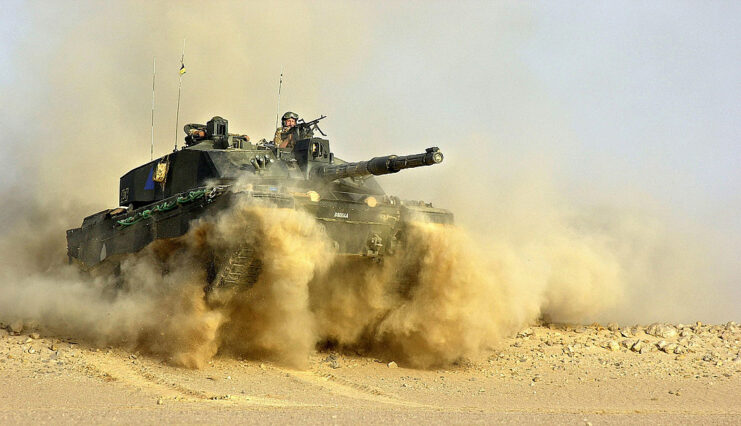
Developed by Alvis PLC and BAE Systems Land & Armaments (formerly Vickers Defence Systems), the Challenger 2 is a main battle tank that’s been equipped by the British Army since 1994.
It’s armed with a deadly-accurate 120 mm Royal Ordnance L30 rifled gun as its main armament, with two smaller guns – L94A1 and L37A2 – providing secondary support. The large gun is capable of firing High Explosive Squash Head (HESH) ammunition and long rod penetators, making it a particularly dangerous opponent on the battlefield. On top of this, the Challenger 2 features ultra-effective Chobham armor, which makes it almost impervious to enemy action.
The Challenger 2 has underwent successful deployments in Bosnia and Herzegovina, Iraq and Kosovo, showcasing its reliability and effectiveness.
Leclerc
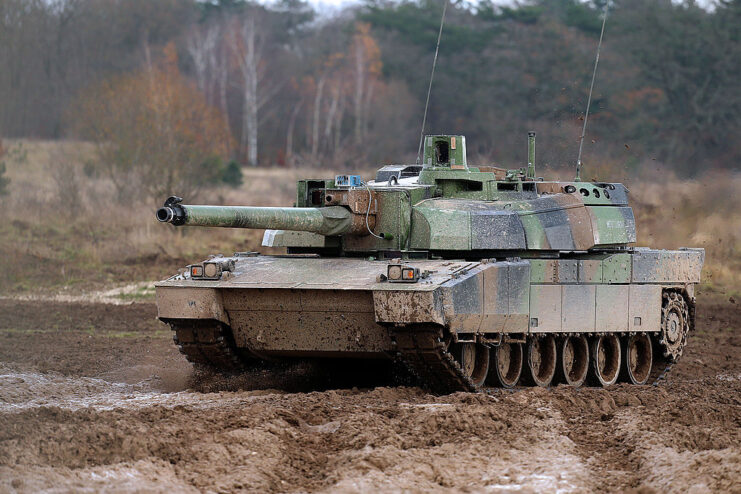
The Leclerc, developed by GIAT Industries (now Nexter), is a third-generation main battle tank equipped by the French, Jordan and the United Arab Emirates (UAE). It was named for Free French commander Marshal Philippe Leclerc de Hauteclocque, who made a name for himself during the Second World War.
The Leclerc is specifically designed for speed and maneuverability, with the ability to travel upwards of 44 MPH. As the sole tank operated by the French Army, it needs to have a powerful arsenal – and it does. It’s equipped with a CN120-26 120 mm tank gun, with two machine guns serving as its secondary armament.
On top of this, it combines exterior armor with an engine that doesn’t emit exhaust fumes while running, meaning it’s not only able to easily survive enemy fire, but also reduce its radar presence.
K2 Black Panther
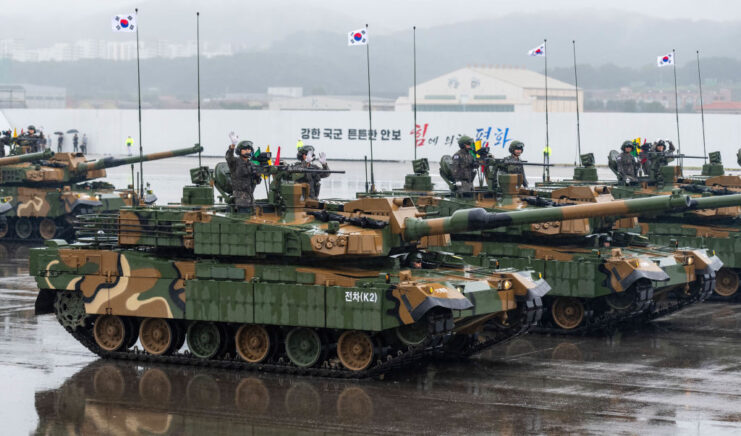
Hyundai Rotem’s K2 Black Panther is South Korea’s most advanced main battle tank. Developed as a replacement for the M48 Patton, it entered mass production in 2013. With a price tag of $8.5 million, it’s one of the most expensive tanks to be in active service.
The K2 Black Panther’s primary armament is a CN08 120 mm smoothbore gun that has a rate of fire of 10 RPM. It also features two machine guns to additional fire support, and the ability to change position for more accurate aiming. On top of this, it’s built with explosive reactive armor and is equipped with a laser range fire capable of locking onto targets as far as 6.1 miles away.
Along with the aforementioned, the K2 Black Panther was designed to operate an advanced passive protection system, providing comprehensive defense against various threats. Despite its high cost, the tank’s technological prowess and battlefield capabilities make it one of the most advanced in the world.
Type 99
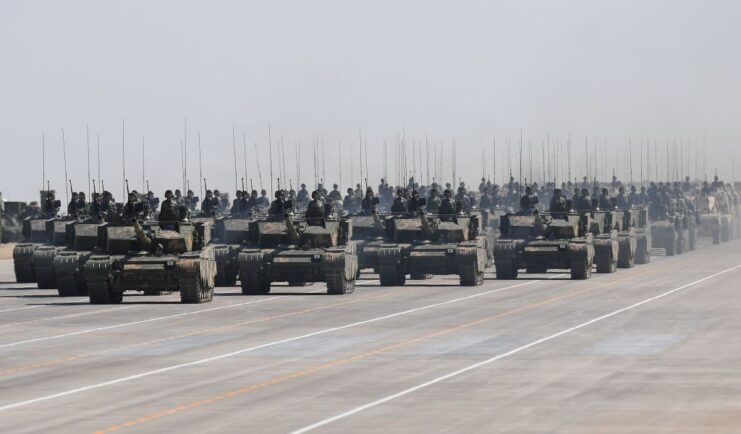
China’s Type 99 is a third-generation main battle tank. Developed as a replacement for the aging Type 88, it’s based on the Soviet-era T-72 chassis and has been designed with agility and fierce firepower in mind.
Operated solely by the People’s Liberation Army Ground Force, the Type 99 has twice undergone upgrades, with the latest model, the Type 99A2, seeing the addition of explosive reactive armor on the front and sides of the glacis turret. The tank is armed with an autoloading ZPT-98 125 mm smoothbore gun capable of firing a variety of ammunition, including anti-tank guided missiles, as well as two machine guns, meaning it can easily stand up to its contemporaries.
China has mass-produced over 1,200 Type 99s, making it the backbone of its Armed Forces. While relatively untested in combat, the tank’s affordability and advanced features make it a strong addition to the country’s military arsenal.
T-90
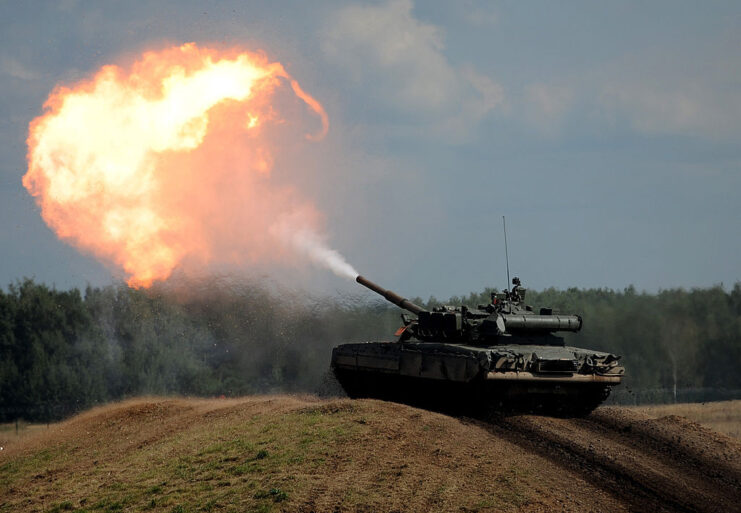
You know how we mentioned the T-72 earlier? Well, the T-90 was actually developed to replace the Soviet-era tank. Developed by UralVagonZavod, it’s a third-generation main battle tank operated by Russia and a host of other nations.
While not very different than its predecessor, the T-90 does include several enhancements and upgrades that make it one of the best armored vehicles in Russia’s military arsenal. Along with donning new types of armor, the tank makes use of the Shtora-1 electro-optical active protection system, which allows it to target and defend against incoming anti-tank guided missiles. When paired with its smoothbore main gun and machine gun complements, this makes the tank difficult to take out.
More from us: Hikers Made An Incredible Discovery In a Northern British Field – A Canadian Ram Tank!
As of 2023, the United States was believed to be studying the T-90. An “A” variant of the tank, believed to have been captured during the Russo-Ukrainian War, was seen, of all places, at a gas station in Louisiana!
